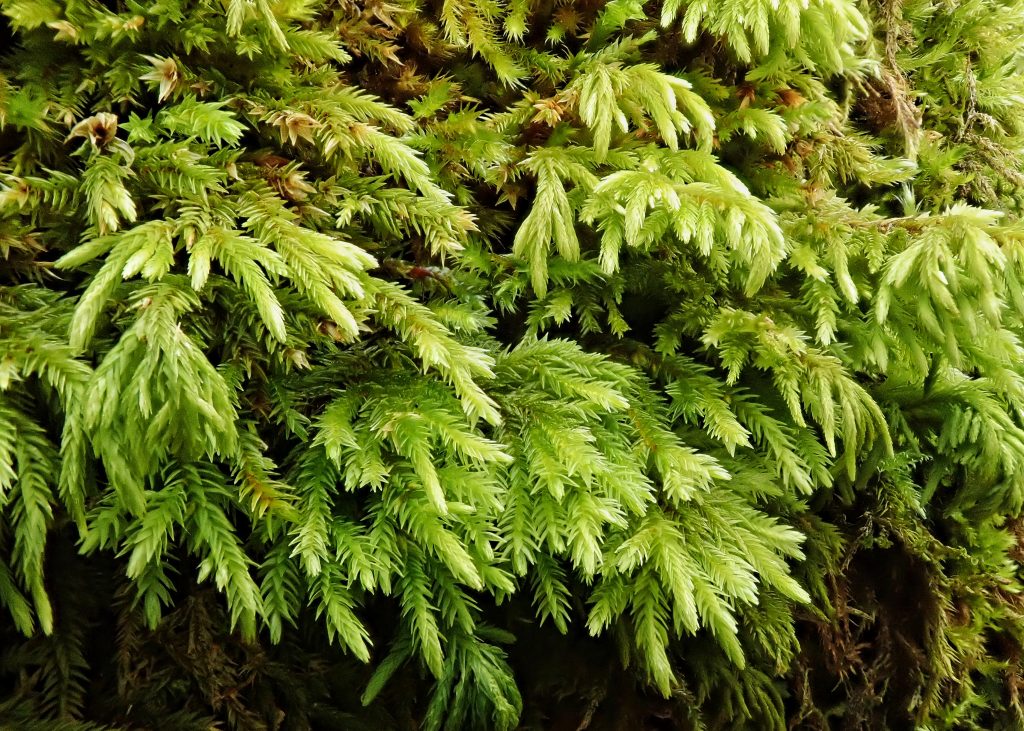
So, this was very cool. When I found this moss I knew I’d seen pictures of something similar before. When I got home from that walk I grabbed my favorite starting reference, ‘Common Mosses of Western Oregon and Washington’ (McCune/Hutton), and before I even opened it I saw this moss on the back cover!
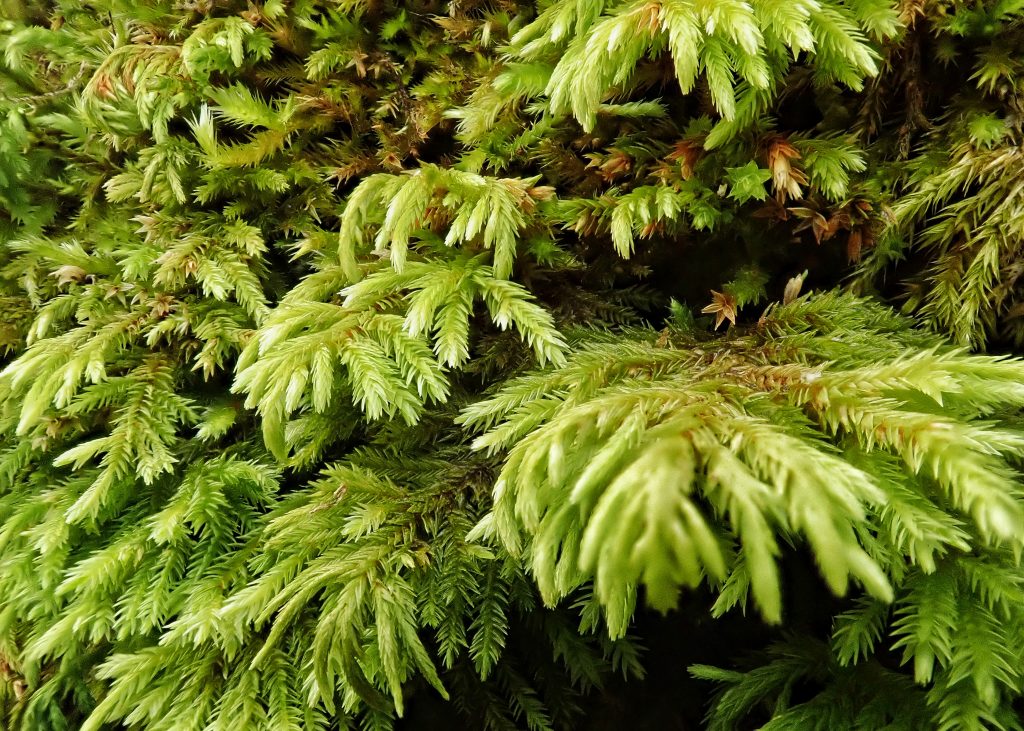
And it was actually pretty easy to confirm that identification because some of the shoots had already curled into nice little fiddleheads. But I put a slide of leaves under the scope anyway, and easily found the papillae caused by the prorate cell walls. That was a first! As I’ve mentioned before, determining whether a leaf is papillose or not is very difficult for me, and feelings of dread pop up at the mere sight of the word.
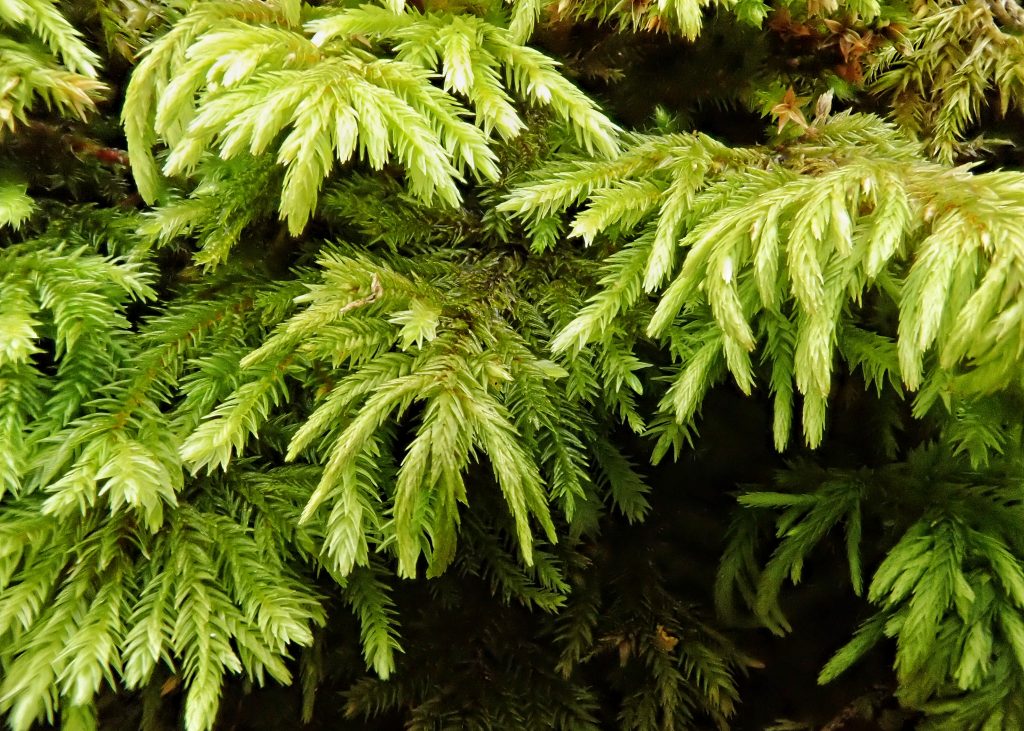
Dendroalsia abietina is the sole species in a monotypic genus. It was first assigned to Neckera, and has bounced around to 6 other genera before ending up alone in Dendroalsia. It is endemic to the Pacific Coast, and is not found east of the Rockies, or even the Sierra Nevada Mtns.
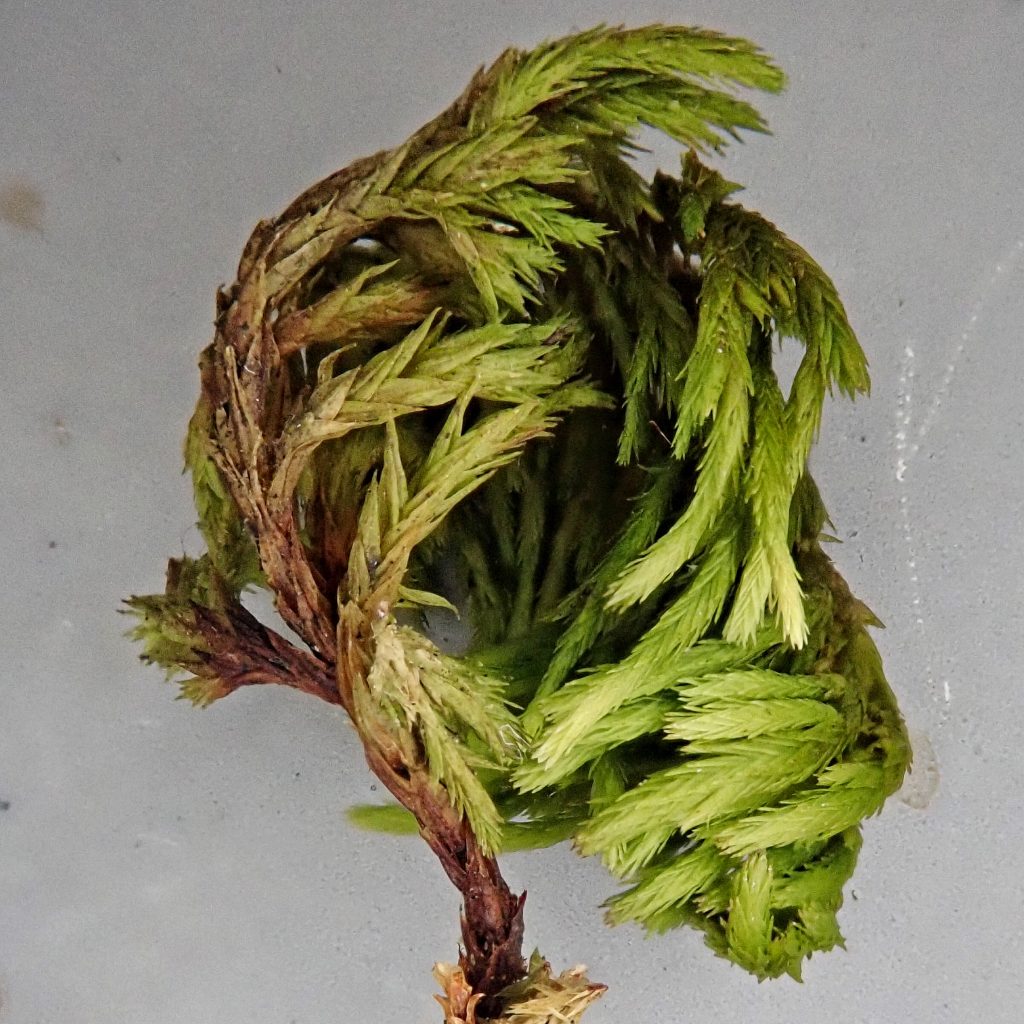
Description- Shoots are pleurocarpus, green, bilaterally symmetrical and regularly pinnate on the distal (farthest from the base) portion; unbranched in the basal portion; forms mats on vertical surfaces which arch away from the substrate in a manner reminiscent of layers of fir branches; leaves are up to 3.5mm long, ovate to lanceolate, toothed on margins; leaf surface is papillose due to the cell walls extending forward and overlaying the next cell (called prorate); costa doesn’t quite reach the end of the leaf; dry shoots curl into a form suggesting a fiddlehead.
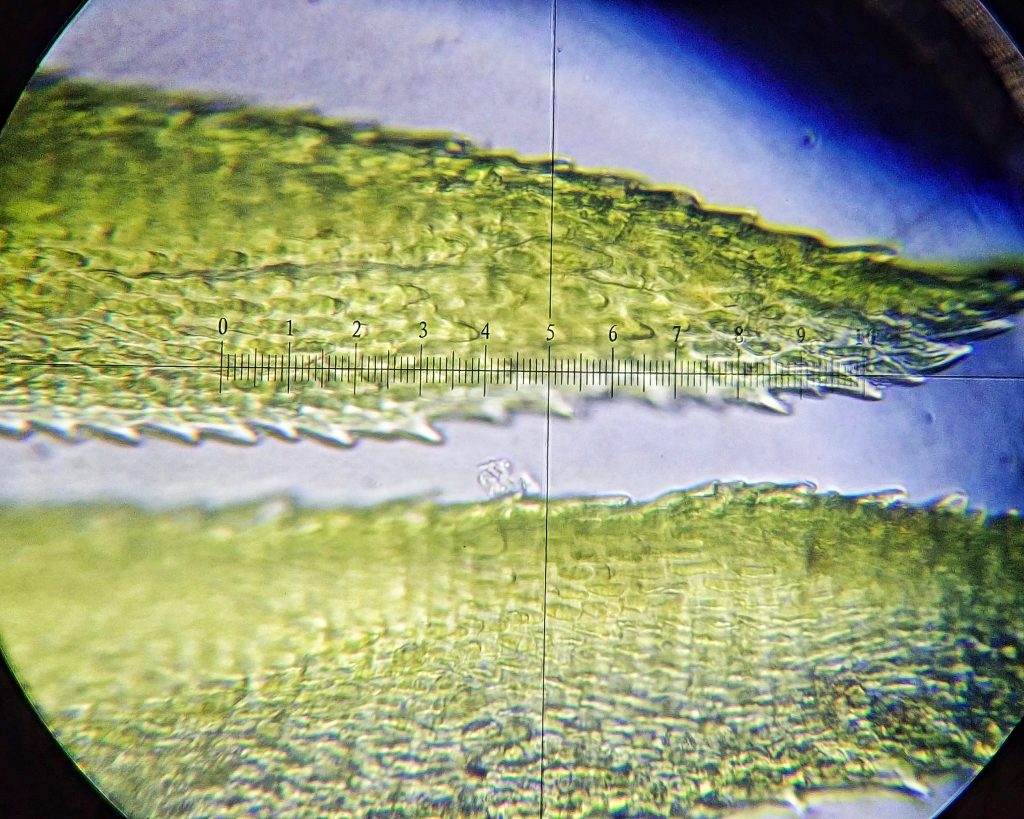
Similar species– Other dendroid mosses, like Leucolepsis acanthoneura and Climacium dendroides, are radially symmetrical rather than bilaterally symmetrical; regularly pinnate pleurocarps such as Hylocomium splendens and Kindberia oregana have branching along most of the shoot. And none of these species’ shoots form fiddleheads when dry.
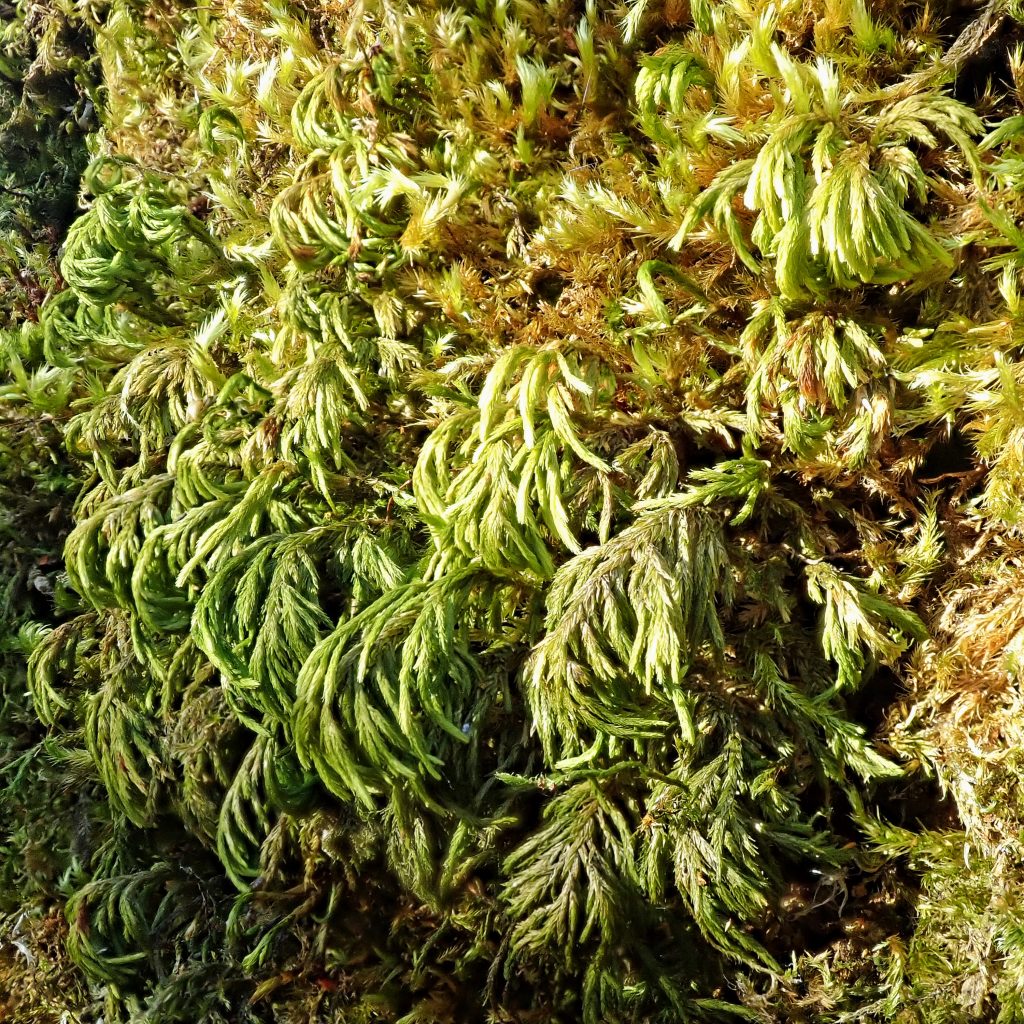
Habitat– Epiphytic on trees and large rocks in mesic environments up to 3000’ elevation.
Range-Primarily west of the Cascades, with disjunct populations in northern Idaho, northwest Montana, and oddly, Lava Beds National Monument in northeastern California.
Reproductive timing– March-June

Etymology of names– Dendroalsia means ‘tree-like Alsia’, Alsia being another genus of moss. Alsia itself is an anagram of Lasia, another genus of moss, and alludes to similarities between the genera. And Lasia is Latin for ‘wooly’ and references the appearance of the members of that genus. The specific epithet abietina means’like a small fir tree’ in Latin, and refers to the overall appearance of the shoots.
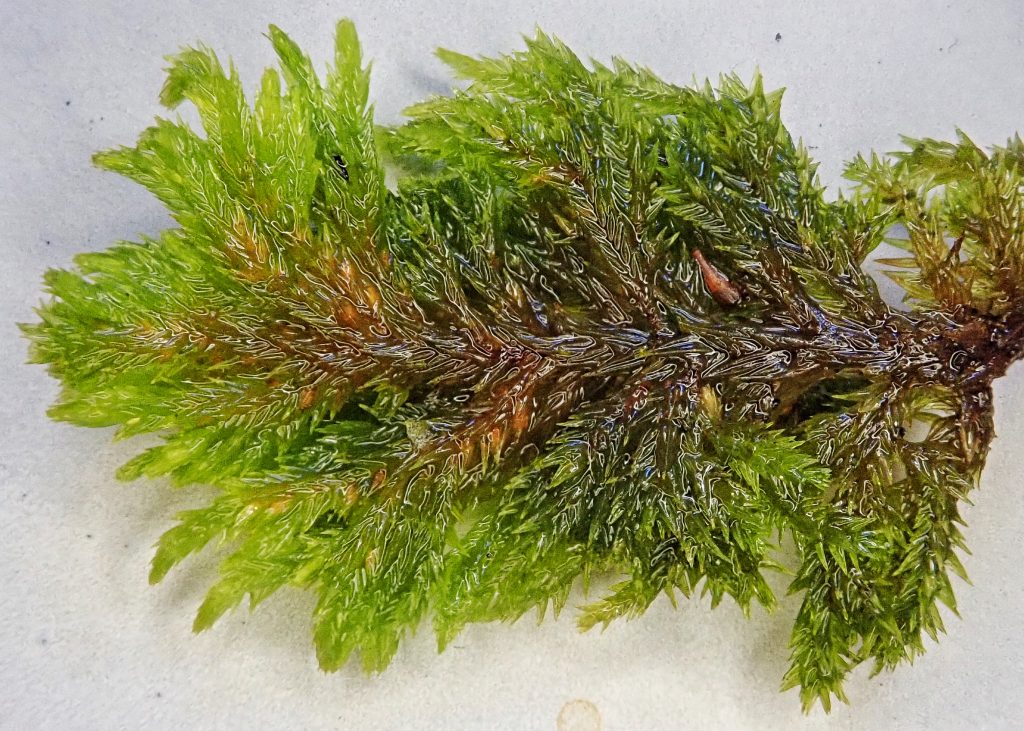
http://www.efloras.org/florataxon.aspx?flora_id=1&taxon_id=250099076
https://ucjeps.berkeley.edu/cgi-bin/get_moss_treatment.pl?taxon=Dendroalsia%20abietina
http://linnet.geog.ubc.ca/Atlas/Atlas.aspx?sciname=Dendroalsia%20abietina
http://fieldguide.mt.gov/speciesDetail.aspx?elcode=NBMUS24010
https://wildflowersearch.org/search?&tsn=547702
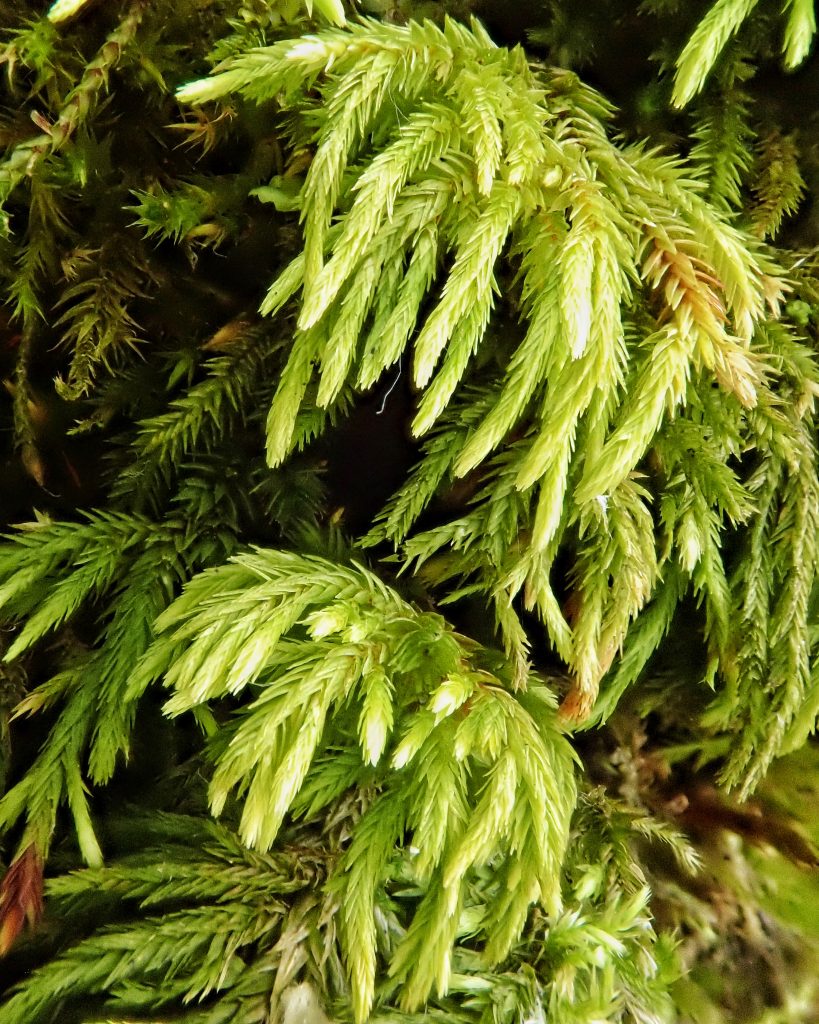
So strange that it’s also in Lava Beds NM! I think you better go down there and investigate whether the person who claims that is correct or not 🙂
I agree! I hope to do so this spring. There are some great lichens there too!
I don’t know about moss but there is a fern that grows in the Lava Beds that only grows there and at the coast.
I don’t know much about botanical terminology but the word ‘papillose’ calls to mind the word ‘butterfly’. And the overlapping scales on the moss leaves look very similar to the way the colored scales are arranged on a butterfly wing. I enjoy your posts and photos.
Exactly! Thanks for the appreciation!